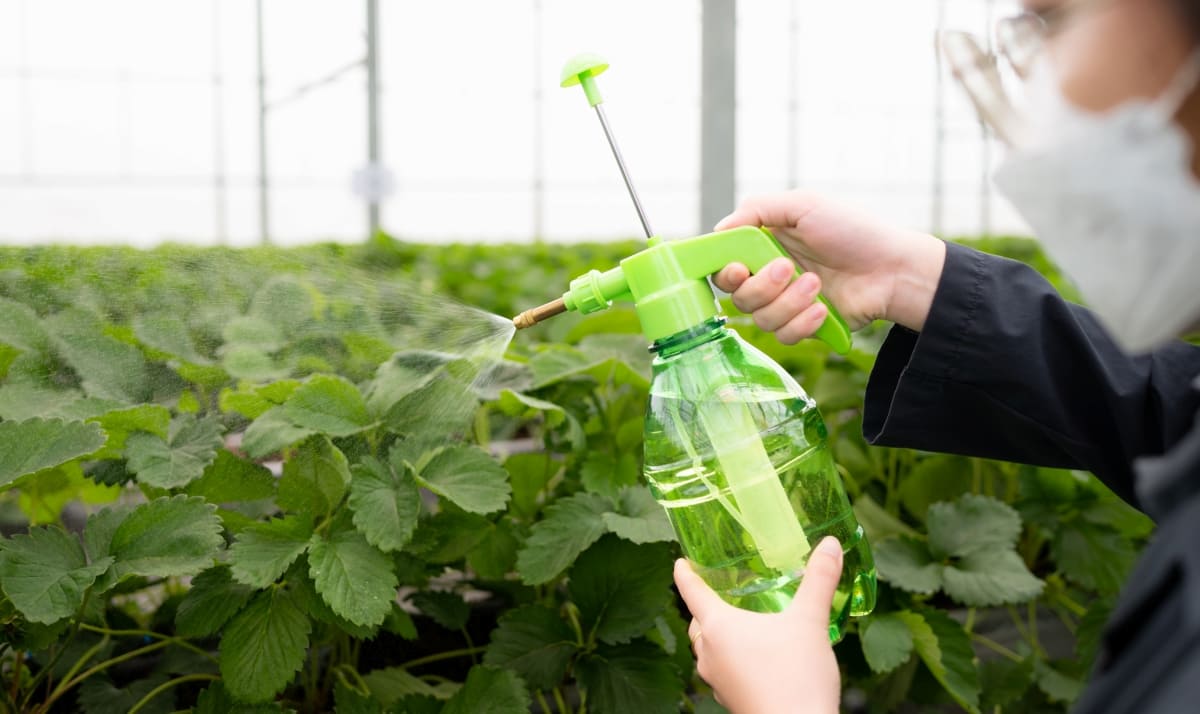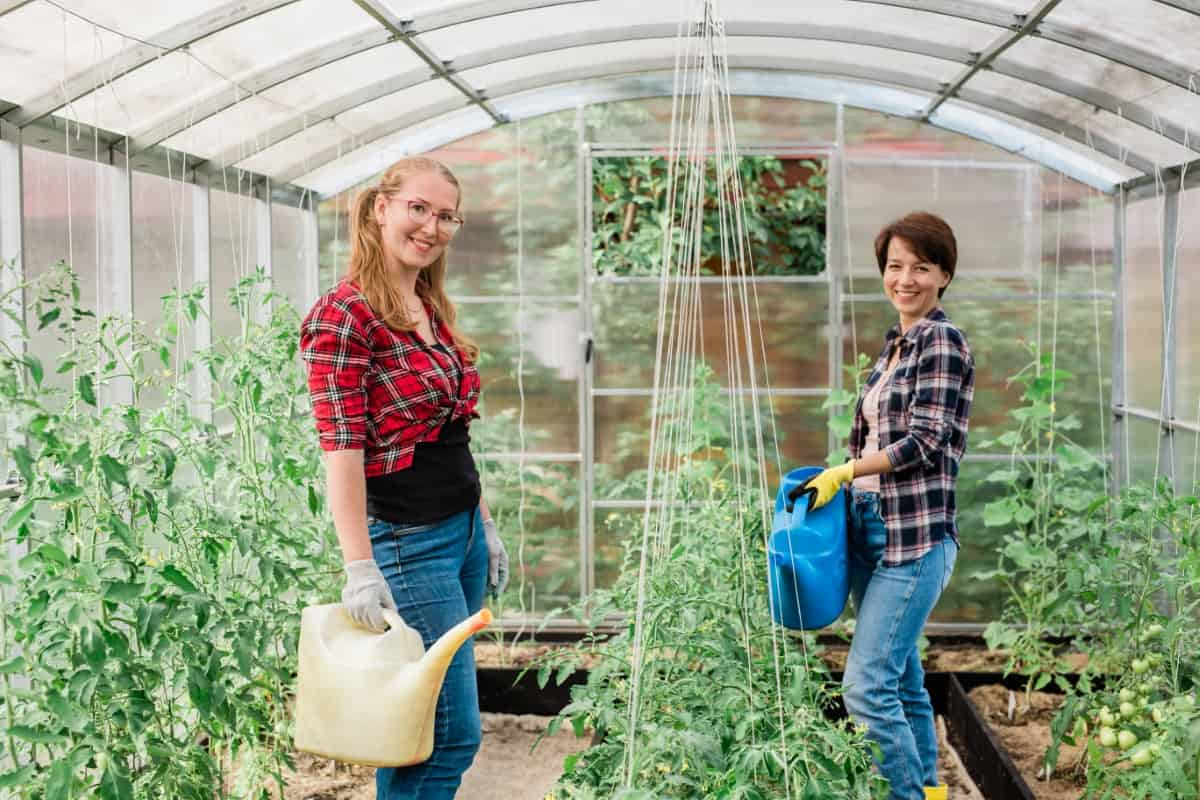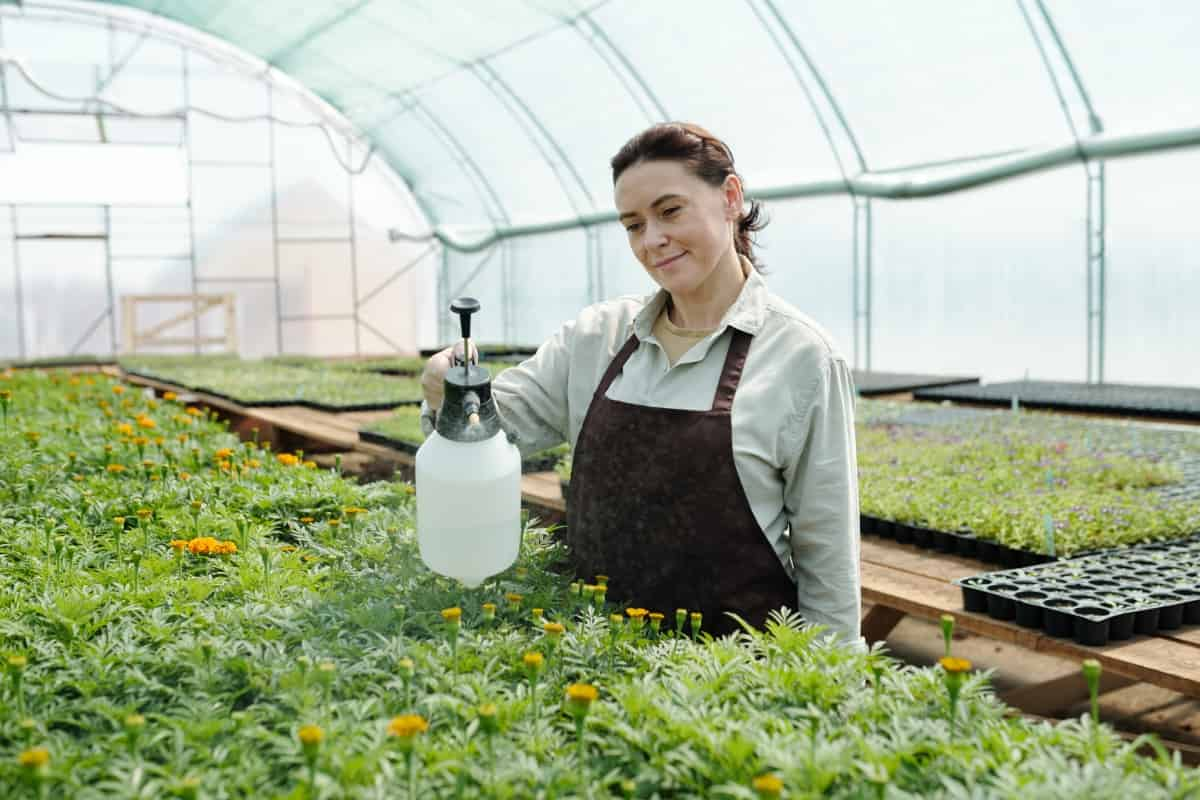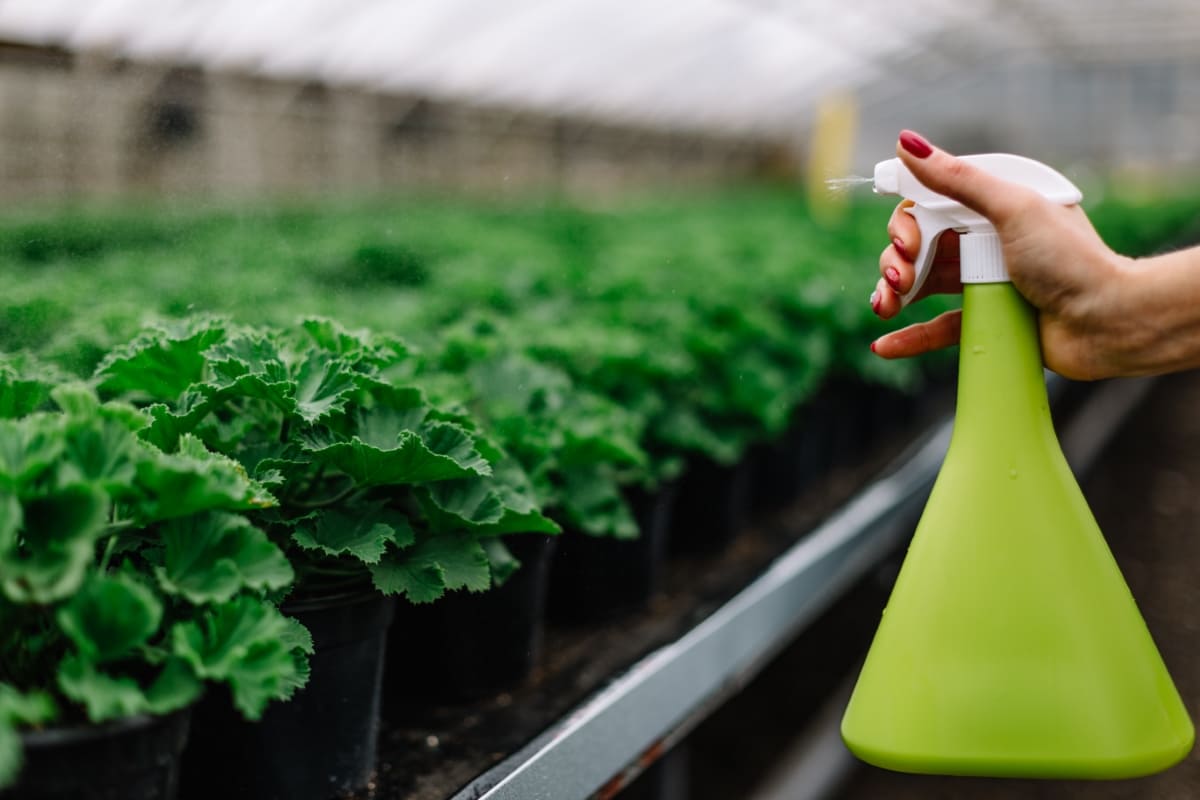Neem oil has gained immense popularity among polyhouse farmers due to its natural and effective bug-control properties. It is a powerful tool that can help protect your precious crops from harmful pests without the need for harsh chemicals. This natural remedy has been used for centuries to control pests and diseases in agricultural practices.

How to Use Neem Oil in Polyhouse
Neem Oil and its Benefits for Polyhouse Plants
Neem oil has anti-fungal properties, making it effective against various plant diseases that can thrive in a polyhouse environment. It helps prevent the fungi growth, ensuring healthier and more productive crops. Another benefit of using neem oil in a polyhouse is its ability to stimulate plant growth and strengthen overall plant health. Using neem oil in polyhouses promotes sustainable farming practices by minimizing chemical pesticide usage.
This not only reduces environmental pollution but also helps maintain a healthier ecosystem within your growing space. Another advantage of using neem oil in your polyhouse is its ability to enhance plant health overall. Neem oil stimulates root development in polyhouse crops by improving nutrient uptake efficiency. This results in stronger and healthier roots, which ultimately lead to better crop yields.
How to Prepare Neem Oil to Use on Polyhouse Plants
To prepare neem oil for use on polyhouse plants, you will need some key ingredients and supplies. Firstly, gather fresh or dried neem leaves and crush them into a fine powder. Next, mix the neem powder with water to create a paste-like consistency. Once you have your neem paste ready, strain it by using a fine mesh sieve to remove any solid particles. This will give you pure neem extract that can be used as an insecticide.
To enhance the effectiveness of the neem extract, you can also add a few drops of liquid soap or detergent. This helps the oil mix better with water and stick to plant surfaces. Now that your neem oil is prepared, it’s time to apply neem oil to your polyhouse plants. Using a spray bottle or sprayer, evenly coat both sides of the plant leaves with the diluted neem oil mixture.
How to Apply Neem Oil on Polyhouse Plants
Firstly, make sure you have the right concentration of neem oil for your plants. Mix about 1 tablespoon of neem oil with one liter of water in a spray bottle. Shake well to ensure the mixture is properly combined. Next, choose a time when the temperature is moderate and there is no direct sunlight. This will prevent potential damage to your plants.
In case you missed it: How to Use Neem Oil on Houseplants: Best Way to Get Rid of Bugs Naturally from Houseplants

Start by spraying the leaves of your polyhouse plants thoroughly, making sure to cover both sides of each leaf. Pay extra attention to areas where pests are commonly found, such as under leaves or near buds. A light misting should be sufficient for most applications.
Mixing and Dilution for the Right Concentration of Neem Oil for Polyhouse Plants
To start with, it’s important to note that neem oil should never be used undiluted as it can cause harm to your plants. The recommended ratio for mixing neem oil is 1-2 tablespoons per gallon of water. This concentration strikes a balance between potency and safety. To prepare the mixture, begin by filling a sprayer or watering can with water.
Gradually add the appropriate amount of neem oil while stirring continuously to ensure proper dispersion. It’s essential to mix thoroughly until the solution appears milky white. When applying the diluted neem oil, make sure to cover all parts of your polyhouse plants – leaves, stems, and even undersides of foliage where pests tend to hide. Adjustments in concentration may be required if you notice persistent issues or adverse effects on your plants.
Can Neem Oil Be Used on All Polyhouse Plant Varieties?
Neem oil is known for its broad-spectrum insecticidal properties, making it effective against many common pests that infest polyhouse crops. Whether you’re growing Tomatoes, Cucumbers, Peppers, or even flowers like Roses and Orchids in your polyhouse, neem oil can help protect them from pesky insects. It works by disrupting the feeding processes of insects, ultimately leading to their demise.
However, while neem oil is safe for most plants, there are a few exceptions to keep in mind. Some sensitive plant varieties may have adverse reactions to neem oil sprays. It’s always best to test a small area of your plants before applying neem oil extensively.
How Long Does Neem Oil Stay Effective on Polyhouse Plants?
The application frequency plays a crucial role. For optimal effects, it is recommended to apply neem oil every 7-14 days or as needed. This ensures that the protective layer of neem oil remains intact on the leaves, deterring pests from infesting them.
Using Neem Oil in Combination with Other Types of Pest Control Methods
The popular method is to use neem oil alongside insecticidal soaps. Insecticidal soaps work by suffocating insects on contact, while neem oil acts as a repellent and disrupts their feeding patterns. By using both together, you create a double whammy that targets pests from multiple angles.
In case you missed it: How to Use Neem Oil on Succulents: A Natural Way to Get Rid of Bugs on Succulents

Another effective combination is neem oil and garlic spray. Garlic has natural anti-fungal and antibacterial properties, making it an excellent companion for neem oil in combating diseases that may affect your polyhouse plants. Mix crushed garlic cloves with water and strain before adding the desired amount of diluted neem oil. Additionally, incorporating beneficial insects into your polyhouse environment can greatly enhance the effectiveness of neem oil.
Some Common Pests and Diseases that Neem Oil Can Control on Polyhouse Plants
One common pest that affects polyhouse crops is aphids. Neem oil is a deterrent for aphids, preventing them from infesting your precious plants. Another troublesome pest is spider mites. These minuscule creatures thrive in warm and dry conditions, often leaving behind webbing on plants’ surfaces. By applying neem oil to affected areas, you can suffocate these pesky invaders and stop them from spreading further.
Fungal diseases can also wreak havoc in polyhouses. Luckily, neem oil has anti-fungal properties that inhibit the growth of fungal spores and prevent their spread. Neem oil also helps improve overall plant health by boosting immune systems naturally without harmful chemicals or toxins which could harm beneficial insects or organisms in your polyhouse ecosystem.
How to Monitor the Effectiveness of Neem Oil on Polyhouse Plants
One way to do this is by regularly inspecting the polyhouse plants for any signs of pests or diseases. Look out for any new infestations, damage to leaves, or wilting, as these could indicate that the neem oil treatment needs adjustment. Another method of monitoring effectiveness is by observing changes in pest populations over time. Keep a close eye on the number of pests present before and after applying neem oil. Regularly communicate with other polyhouse growers or experts who have experience using neem oil.
Safety Precautions to Take when Using Neem Oil on Polyhouse Plants
Protective Clothing: When applying neem oil, make sure to wear protective clothing like gloves, goggles, and long-sleeved shirts. This will help prevent contact with the neem oil and minimize skin irritation.
Proper Ventilation: Make sure proper ventilation is important in the polyhouse while using neem oil. This will help prevent inhaling the fumes or vapors from the oil, which can be harmful if exposed for long periods.
Follow Instructions: Always follow the instructions carefully provided by the manufacturer regarding dilution ratios and application methods. Using too much neem oil can harm your plants, so it’s essential to use it correctly.
Clean Equipment After Use: After using neem oil, thoroughly clean all equipment used for application before storing them away for future use.
Frequently Asked Questions (FAQ) on Using Neem Oil in Polyhouse
Is Neem Oil Safe for My Polyhouse Crops?
Yes. Neem oil is safe for most plants when used as directed. However, it’s always a good idea to test a small area before applying it to your entire crop to ensure there are no adverse reactions.
When Should I Apply Neem Oil in Polyhouse Crops?
It’s best to apply neem oil during cooler temperatures or in the early morning or late afternoon when beneficial insects are less active. Avoid spraying neem oil in direct sunlight, as this can cause leaf burn.
Can I Use Neem Oil During Flowering or Fruiting Stages?
Yes. Neem oil is safe to use throughout all stages of growth, including flowering and fruiting.
In case you missed it: How to Use Neem Oil on Cactus Plants: Best Way to Get Rid of Bugs Naturally from Cacti

Conclusion
Neem oil has been widely used for its remarkable effects on polyhouse crops. When applied to plants, neem oil acts as a natural insecticide and fungicide, effectively controlling pests and diseases that can harm the plants. Its active ingredients disrupt the life cycle of insects by inhibiting their ability to feed, grow, or reproduce.
- Deworming Schedule for Dogs/Puppies: A Beginners Guide
- How to Prevent and Control Parasites in Goats
- Beneficial Insects in Pest Management
- Natural Solutions for Pest Control in Flower Gardens
- Types of Fungicides Used in Agriculture
- Common Issues in the Fruit Development Stage of Pomegranate Farming
- Fruit Development Issues in Papaya: Easy Solutions and Treatment
- Soil-Borne Diseases and How to Protect Your Plants
- Practices to Prevent Disease Spread in the Garden